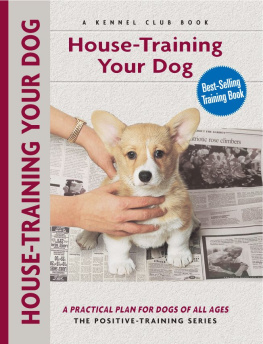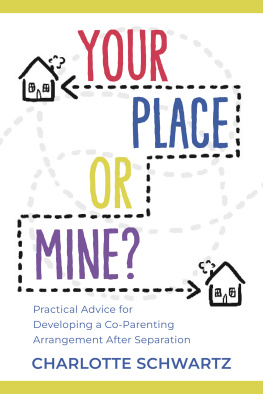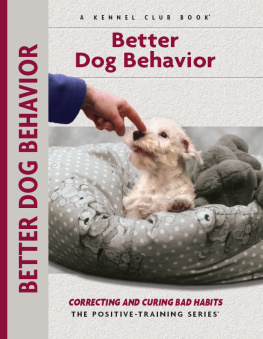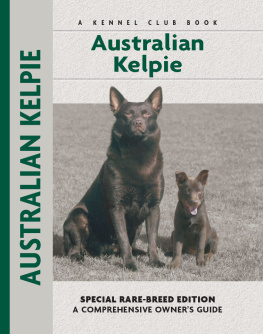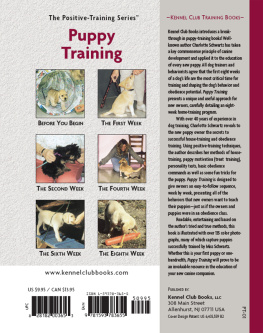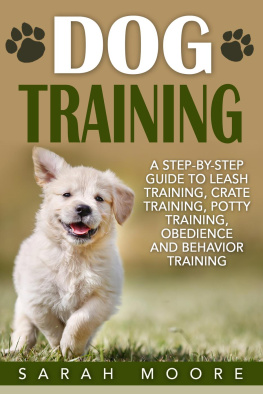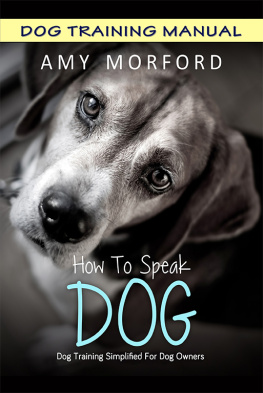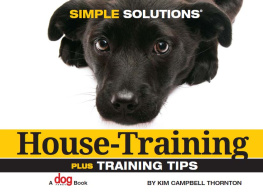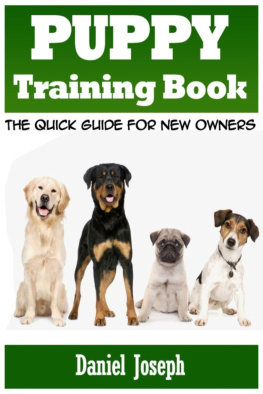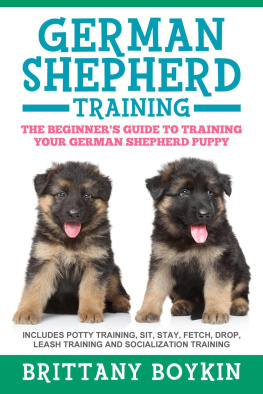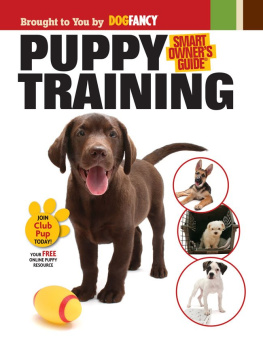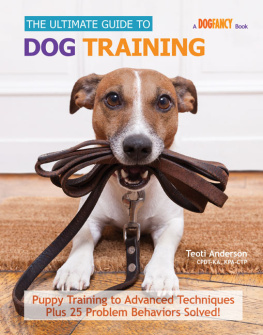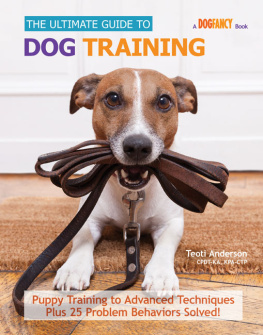
DOG THOUGHTS
Whenever we try to teach a dog something, we need to figure out what the dog thinks about the matter. This isnt as easy as it may sound. Dogs cant tell us, for example, how they feel about learning when and where to relieve themselves. Consequently, we can only surmise what they think about this basic natural function, if they think anything about it at all.
If we could ever talk to a dog about it, we might in fact find out that dogs give practically no thought to urinating and defecating. Its a normal bodily function and they, like other mammals, have very little to do with the urge to go. When it comes on, the body naturally relieves itself and normal activities resume.

When it comes to toileting, its just a bodily function for dogs. They know they have to do it but they dont put much, if any, thought into it!
Since humans bring dogs into their homes, however, dogs must learn what is and is not acceptable when it comes to the matter of relief. Most people want the dog to relieve himself outdoors. In some cases, with very small dogs, owners want their tidy tiny pets to use special areas of the home for this purpose. Incontinence pads, newspapers, cat-litter boxes are all items sometimes used by toy-dog owners for house-training.
LIKE CLOCKWORK
A young puppy needs to defecate between 15 and 30 minutes after he has eaten a meal. By paying close attention to the dogs normal elimination habits, you can closely predict the times to take the dog out. As the puppy matures, the period for which he is able to hold it after eating will lengthen.
In other circumstances, some people, perhaps women or the elderly, who live alone, especially in big cities, may be apprehensive about going outside to walk their dogs at night. Thus training the dog to paper is a practical solution for personal safety and peace of mind. Such cautious people may choose a bathroom or a laundry or utility room for the dogs relief area. As long as the dog understands what is acceptable and the owner keeps the door open at all times so the dog has access to his spot, indoor house-training works well.
Only small and/or toy dogs are suitable for this indoor routine. Teaching a large-breed puppy to relieve himself indoors would not be very practical when hes six months old. The amount of urine and feces that a large dog produces would be inconvenient when it comes to cleanup.
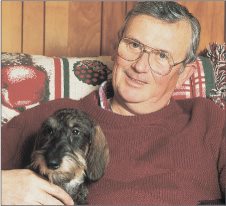
Its a happy owner whose dog is acclimated to clean indoor living and reliable in his habits around the home.
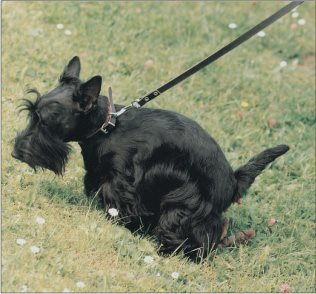
If you have a yard, you will walk your dog there on leash to show him the relief site youve chosen. If no yard is available, you will always take your dog out for on-leash walks at potty times.
Your dog probably doesnt think much about voiding. However, a dog can be trained to recognize when he feels the urge to go and how to communicate that feeling to you, his owner. Thats the secret to house-training: teaching the dog to communicate with you and not relieve himself in inappropriate places.

Plan a feeding and elimination schedule that is appropriate for your dog and also fits into the flow of your daily schedule and the household routine.
FEEDING TIMES
When you feed the dog influences when he needs to relieve himself. Regardless of whether youre house-training a puppy or an adult dog, the feeding schedule makes a difference. Generally speaking, food is passed between three and six hours after the dog eats. The amount of time between ingesting food and passing it varies widely for many reasons. The type of food ingested, the amount ingested, the dogs own individual metabolism and the dogs activities during the period of digestion all play a part in the bodys need to void.
For example, when the dog is physically active, the body runs on fast forward to keep pace. Body functions react much more rapidly than when the dog is quiet and at rest. When the body senses idle time, bodily functions slow down. In that case, matter moves more slowly through the digestive system, prolonging the voiding process. Thus a brisk walk or a run-and-retrieve play session can bring on the dogs need to void, while a nights sleep slows things down so the dog doesnt feel the need to pass his food so quickly.
The same routine applies to water consumption, too. Therefore, its prudent to restrict the intake of water in the later evening hours. If the dog consumes large amounts of water between dinner and bedtime, chances are youll be getting up several times during the night because the dog wants out. Always make water available to the dog, but limit the amount in the evening. A few sips now and then or offering him an ice cube to lick can satiate his thirst while it does not overload his kidneys and bladder.
Putting the dog on a scheduled feeding plan is, for many reasons, the best way to control the dogs elimination times. Young puppies usually require three meals a day, but that phase passes quickly. Before you know it, puppy will be old enough to switch to a twice-daily feeding schedule, one meal in the morning and one in the evening. Adult dogs should also be on a two-meal-a-day program.
Serving large quantities of food at one time, such as just one big daily meal, overloads the dogs digestive system and can cause diarrhea, stomach upset and great discomfort. Whats even worse, gastric torsion (or bloat) can result when the stomach flips over and prevents food and gases from escaping through the intestines or mouth. Large-breed dogs are more prone to bloat than small-breed dogs, though any dog can suffer gastric torsion. It is a life-threatening condition that must be surgically treated immediately.

Physical activity stimulates a dogs need to void. Its not uncommon for a dog to relieve himself during a play session or right afterwards.
The two-meal-a-day plan is the best for maintaining good health in the dog and is also the most convenient plan for owners. Most people are home in the early morning and again in the early evening, so feeding the dog at those times proves convenient for all. Once you establish a regular feeding schedule for your dog, whether puppy or adult, you can then begin to observe the times when the dog passes his stool. By being aware of your dogs elimination habits, you can plan the times when he needs to be taken out for walks.
DIGESTION COURSE
It can take up to 18 hours for the dogs food to be fully digested. Thus, if the puppy swallows a non-food item, carefully examine each stool for several days afterward to be sure he passes the item.

Next page
